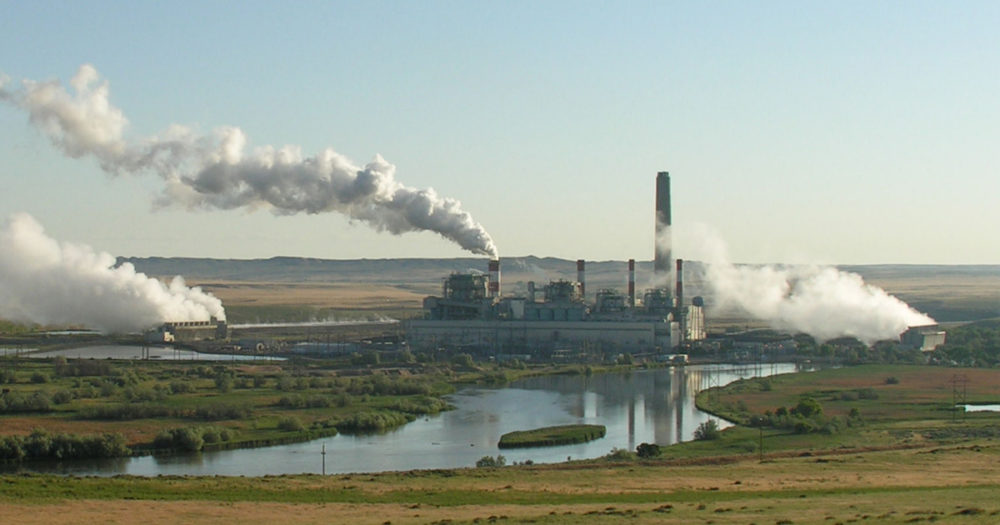Much has been written on coal and coal miners since the president began campaigning in earnest in 2016. Since taking office, he has continued that dishonest and dangerous rhetoric—and has directed his agencies to do something. Anything. Except, of course, anything that represents real solutions for coal miners and their communities, instead proposing (initially at least) to cut federal programs that invest in those communities.
The president continues to push for a misguided federal bailout of the coal industry—a blatant political payoff to campaign donors using taxpayer money with no long-term solutions for coal workers. The latest shiny object masquerading as reasoning? National security. But as we know, bailing out uneconomic coal plants only exacerbates the real national security issues brought on by climate change, while continuing to saddle our country with the public health impacts of coal-fired electricity—which hurt real people in real communities.
As is typical with this administration, substance and science and evidence are inconsequential compared to ideology, and their attempts to bail out money-losing coal and nuclear plants are no exception. Here’s a quick take on how we got here and what to expect next.
Let’s see what sticks…
The administration didn’t exactly hit the ground running after the 2016 election—no one bothered to show up at the Department of Energy until after Thanksgiving of 2016, even though career staff were readily available and prepared to brief the incoming administration on the important work of the agency. But by the spring, it had become clear that Energy Secretary Rick Perry would be the front-man in leading the charge for a federal bailout of coal and nuclear plants. His shifting rhetoric and poor justifications for using consumers’ money to prop up uneconomic coal plants suggests that he and his inner circle are desperate to find an argument that sticks and survives legal challenges.
Briefly:
- March 2017: Perry meets with coal magnate and major campaign donor at DOE. The photographer who captures a shot of them embracing at the start of the meeting is later fired for releasing the information to the public.
- April 2017: Perry asks DOE staff to write a report examining the changes to electricity markets affecting “baseload” power (read: coal and nuclear) that might affect grid resilience and reliability. Perry’s request for an electricity grid study is riddled with flawed assumptions, encourages predetermined conclusions, and contradicts research by his own agency.
- July 2017: A leaked version of the draft grid study suggests that DOE career staff were putting together an unbiased report in spite of tremendous political pressure.
- August 2017: The final grid study concludes that closure of coal and nuclear plants do not threaten resilience and reliability, not exactly the conclusion Perry was looking for. The study finds that the grid is operating reliably with high levels of renewables and that low natural gas prices were largely to blame for recent plant retirements. But, in a hint of things to come, it does suggest exploring the idea of “utilizing existing Federal authorities under the Federal Power Act … to ensure system reliability and resilience” and having states use regulatory authority “to support specific at-risk plants that contribute to system resilience.”
- September 2017: Perry pushes forward. Undeterred by the conclusions of the study he requested and evidently uninterested in further research, Perry asks the Federal Energy Regulatory Commission (FERC) to guarantee profits for coal and nuclear plants under the guise of ensuring a reliable and resilient grid.
- January 2018: FERC rejects the proposal—unanimously, even though four of the five commissioners were appointed by the current president—noting that the proposal represented an unwarranted intrusion into electricity markets, and instead opening a docket to study the issue.
- January 2018: The bomb cyclone brings extreme cold to the Northeast. DOE requests one of its National Labs, the National Energy Technology Laboratory (NETL), to write a story (masquerading as a report) about how coal saved the day and prevented massive blackouts. NETL delivered with the intent of pushing back against FERC’s decision, and it might as well have been a fairy tale about a handsome prince.
- May 2018: An internal memo leaks on May 31. It reveals the administration’s plans to use emergency powers, under the Korean War-era Defense Production Act and the Federal Power Act, in order to bail out the money-losing coal and nuclear plants, which took FERC by surprise. The new rationale is that these plants are vital for national security and that without them, the electricity system would somehow be more vulnerable to cyberattacks.
- June 2018: The leak prompts the White House to release a statement on June 1 directing Perry to “take immediate steps to keep both coal and nuclear plants running” on the basis of national security.
- August 2018: Having failed to get its political paybacks through on the first go-around, the administration moves to politicize the important and once-independent FERC. Prominent staff have taken the unprecedented move of discussing proposals before decisions have been made, the administration is planning to put forth a nominee that supports the bailout proposal.
So, the game of whack-a-mole continues.
False arguments
In short, the administration is proposing to use emergency authorities to force grid operators and consumers to buy electricity from uneconomic coal and nuclear plants. Let’s break down the arguments one by one.
Reliability. Despite claims to the contrary, there is no reliability crisis. Lost in the rhetoric around the need for baseload resources is the fact that grid operators already have systems in place to ensure there is adequate supply of electricity when needed. The North American Electricity Reliability Corporation (NERC) projects more-than-adequate reserve margins in almost every region of the country—a few areas of concern but certainly no crisis. PJM Interconnection has repeatedly stated there is no threat to reliability from plant retirements (because they study the impacts on the system of every proposed plant retirement before approval):
“Our analysis of the recently announced planned deactivations of certain nuclear plants has determined that there is no immediate threat to system reliability. Markets have helped to establish a reliable grid with historically low prices. Any federal intervention in the market to order customers to buy electricity from specific power plants would be damaging to the markets and therefore costly to consumers.”
Resilience. Despite claims to the contrary, coal and nuclear plants do not offer additional system resilience because of onsite fuel stockpiles. It turns out, coal piles and equipment can freeze in cold weather, and flooding from extreme rain can affect power plant operations and prevent delivery of coal. A new report suggests that the administration is focusing on the wrong thing (fuel stockpiles) and should instead be focusing on performance-based metrics looking at the overall electricity system. For starters, between 2012 and 2016, a whopping 0.00007 percent of electricity disruptions were caused by fuel supply problems.
National Security. Arguments are now being couched in terms of national security and cyberattacks on the grid. The thing is, coal and nuclear facilities are vulnerable to cyberattacks just like other parts of the electricity grid, a fact completely absent from the leaked memo. Obviously, everyone cares about national security, but there is zero evidence to support the idea that keeping uneconomic power plants online will make us safer.
What we don’t know
Much uncertainty remains about Perry’s latest attempt to make something stick. UCS will keep an eye out for answers to important questions that remain, like:
- Who will pay? Will DOE ask Congress to authorize funding for the bailout, meaning taxpayers get to foot the bill? Or will DOE ask FERC to use its power under the Federal Power Act, implying an additional cost to consumers? In either case, hold on to your wallet.
- How much will it cost? In short, no one really knows, because DOE’s plan is light on details. Estimates range from $17 to $35 billion (with a “b”) per year according to recent studies.
- Which power plants will qualify? Will every single coal and nuclear plant qualify for a handout? Only those that are “near” military installations and could somehow be tied to the administration’s national security rationale? Only the ones that are losing money? Only the ones that donated to the president’s campaign?
- How will qualifying plants get paid? How would the bailout be structured and how exactly would owners of money-losing plants get compensated?
Perry charges ahead—and we must be relentless in our opposition
As we continue to wait for additional details about DOE’s bailout proposal, we are gearing up for a fight. Led by Secretary Perry, the administration continues to make false and misleading arguments about the purported need for keeping uneconomic plants from retiring early—and this issue will be with us as long as the current president is in office. Perry has long since dropped any pretext for caring about market economics or actual information to inform his proposals. In response to Congressional questioning last fall, Perry remarked:
“I think you take costs in to account, but what’s the cost of freedom? What does it cost to build a system to keep America free?” -Secretary Rick Perry, 12 October 2017
When the facts don’t support your argument, you’re forced to rely on empty bumper-sticker statements like this one to make your point.
And stack the deck by putting biased people who support your ideas in decision-making positions. We’ll be watching closely as the process unfolds for nominating someone to fill the vacant seat at FERC.
At UCS, we’re going to continue the fight to hold the administration accountable and stop this misguided and disastrous proposal from being implemented. The facts are on our side—there is no grid reliability crisis and no grid resiliency crisis, but there is a climate crisis, and bailing out coal plants will only add to the climate crisis with real adverse consequences to the economy and public health. Stand with us.

